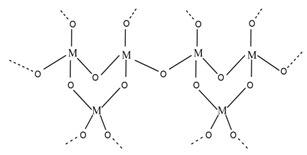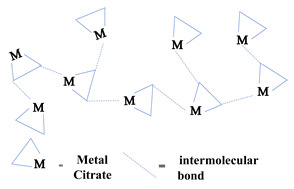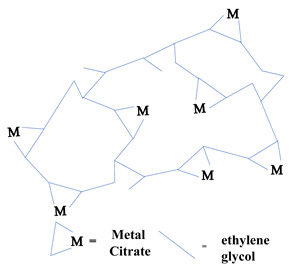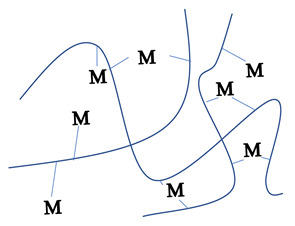Table 1.
Classification of five different types of “gels” essential to a material’s sol-gel synthesis [35].
| Type of Gel | Bonding | Source | Gel Schematic |
|---|---|---|---|
| Colloidal | Particles connected by Van der Waals or hydrogen bonding | Metal oxides or hydroxide sols |

|
| Metal-oxane polymer | Inorganic polymers connected via covalent or intermolecular bonding | Hydrolysis or condensation of metal alkoxides, e.g., SiO2 from tetramethyl orthosilicate |

|
| Metal complex | Weakly interconnected metal complexes | Concentrated metal complex solution, e.g., aqueous metal citrate or ethanolic metal urea often form resins or glassy solids rather than gels |

|
| Polymer complex I in situ polymerizable complex (“Pechini” method) | Organic polymers interconnected by covalent or coordinate bonding | Polyesterification between polyhydroxy alcohol (e.g., ethylene glycol) and carboxylic acid with metal complex (e.g., metal-citrate) |

|
| Polymer complex II coordinating and crosslinking polymers | Organic polymers interconnected by coordinate and intermolecular bonding | Coordinating polymer (e.g., alginate) and metal salt solution (typically aqueous) |

|
